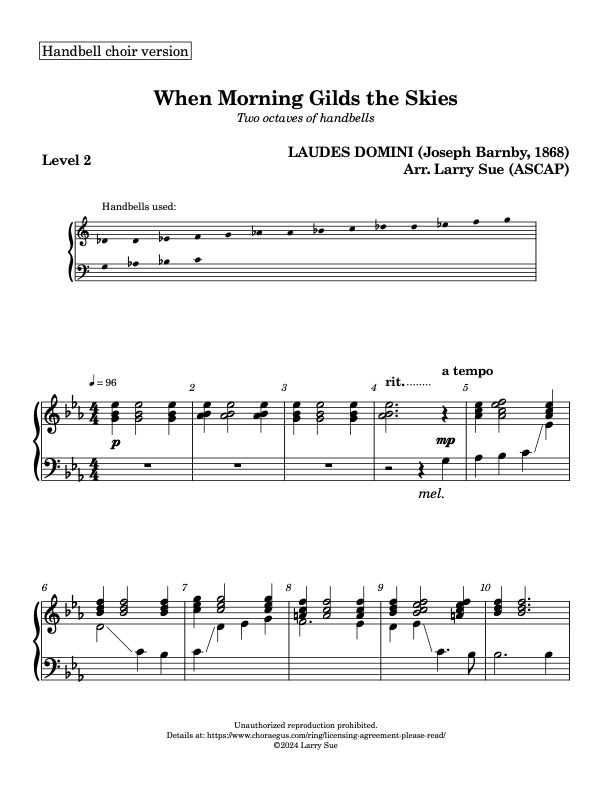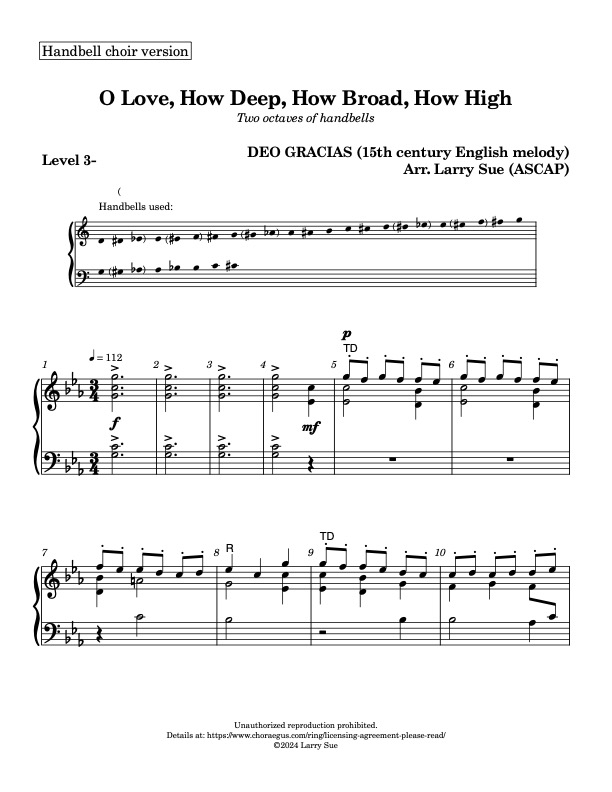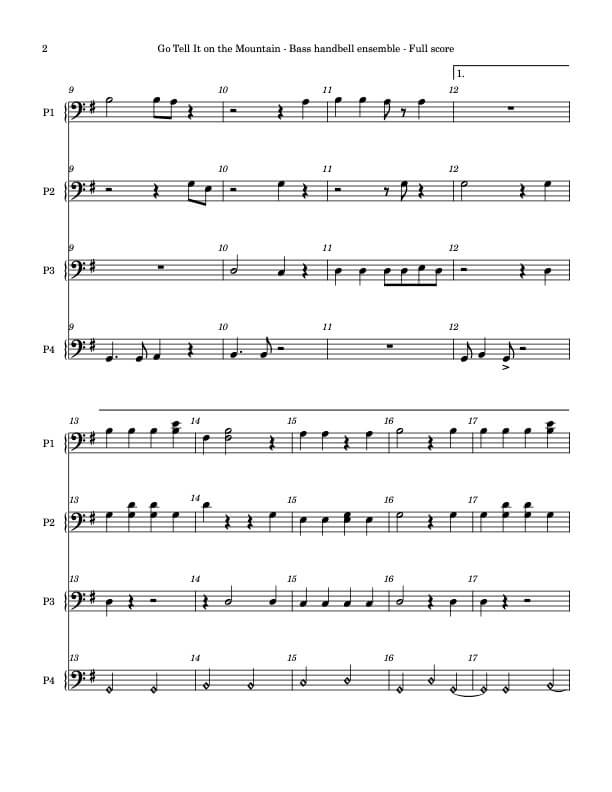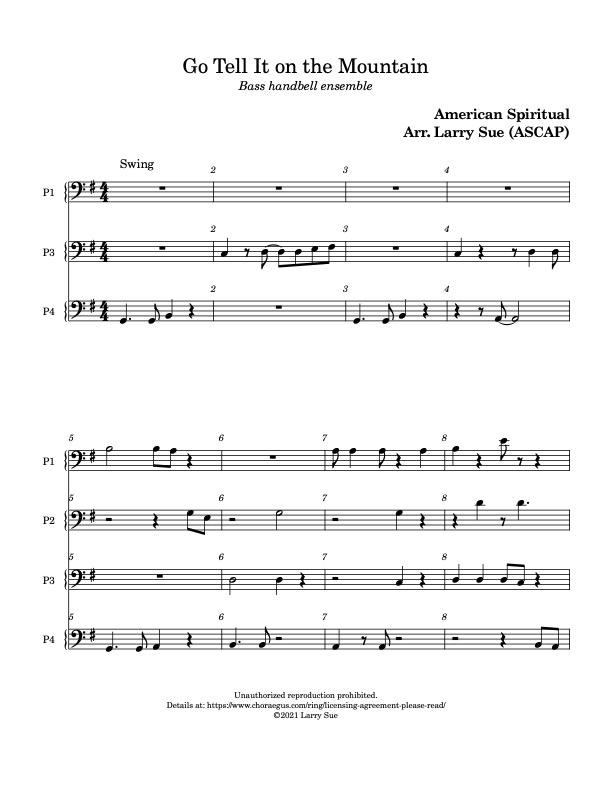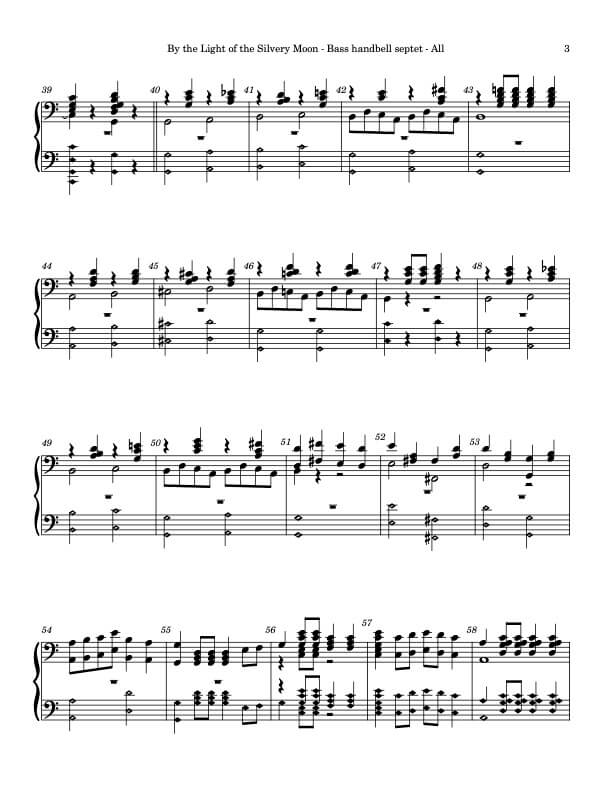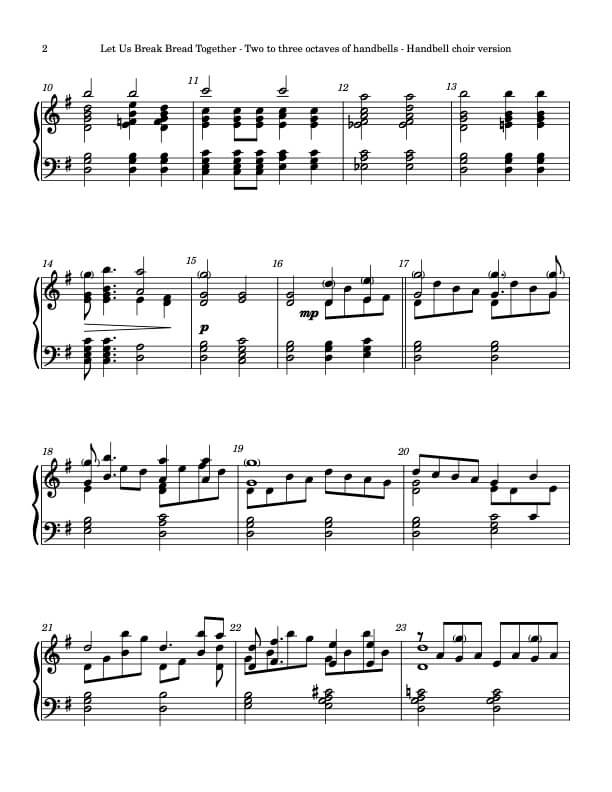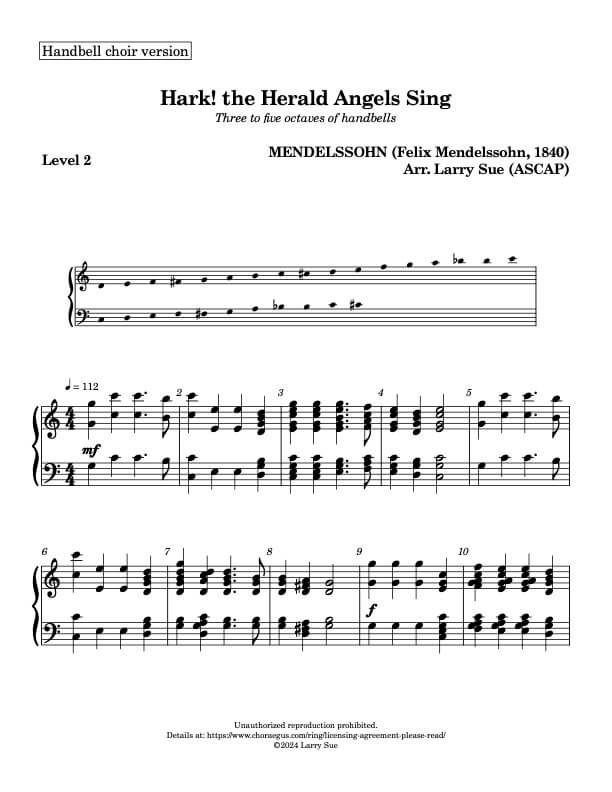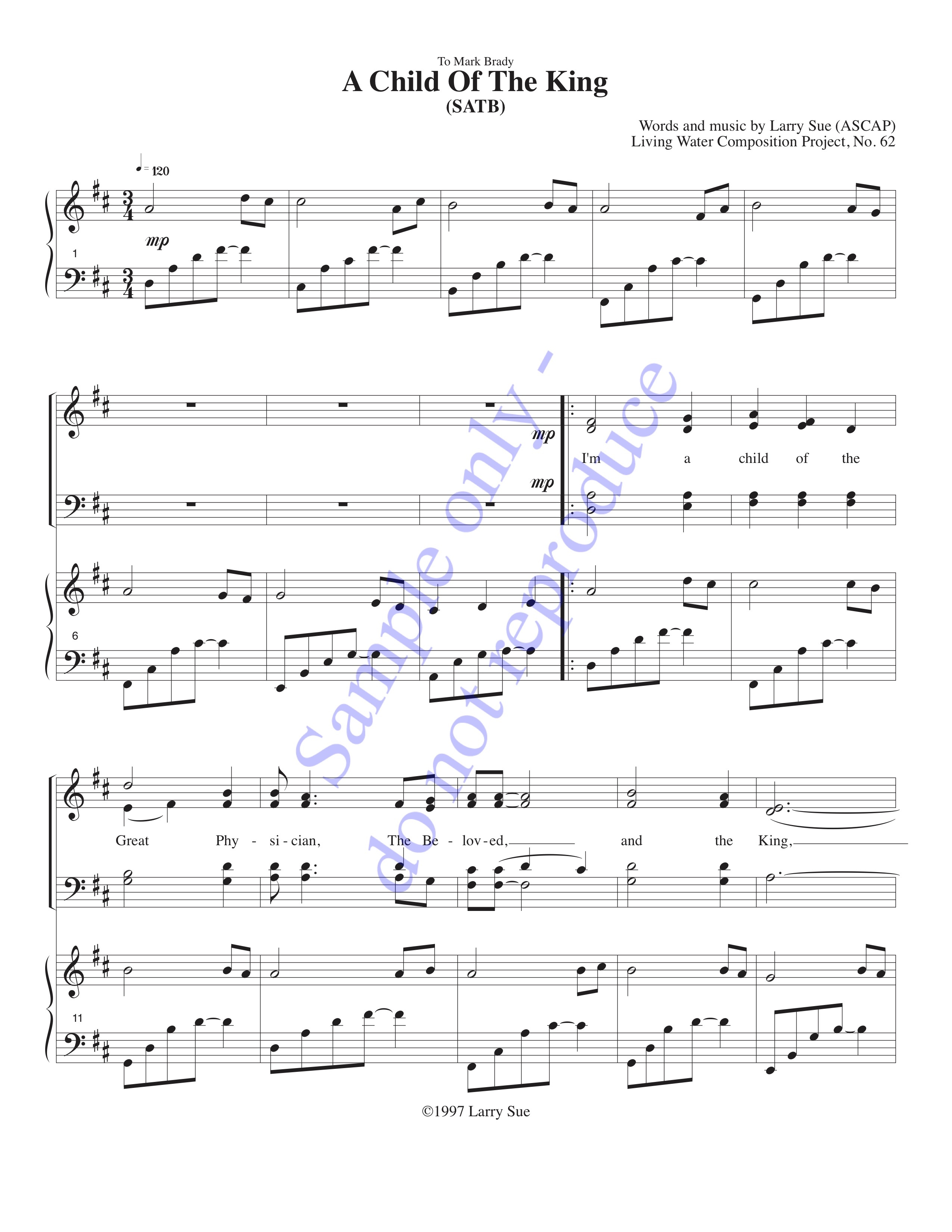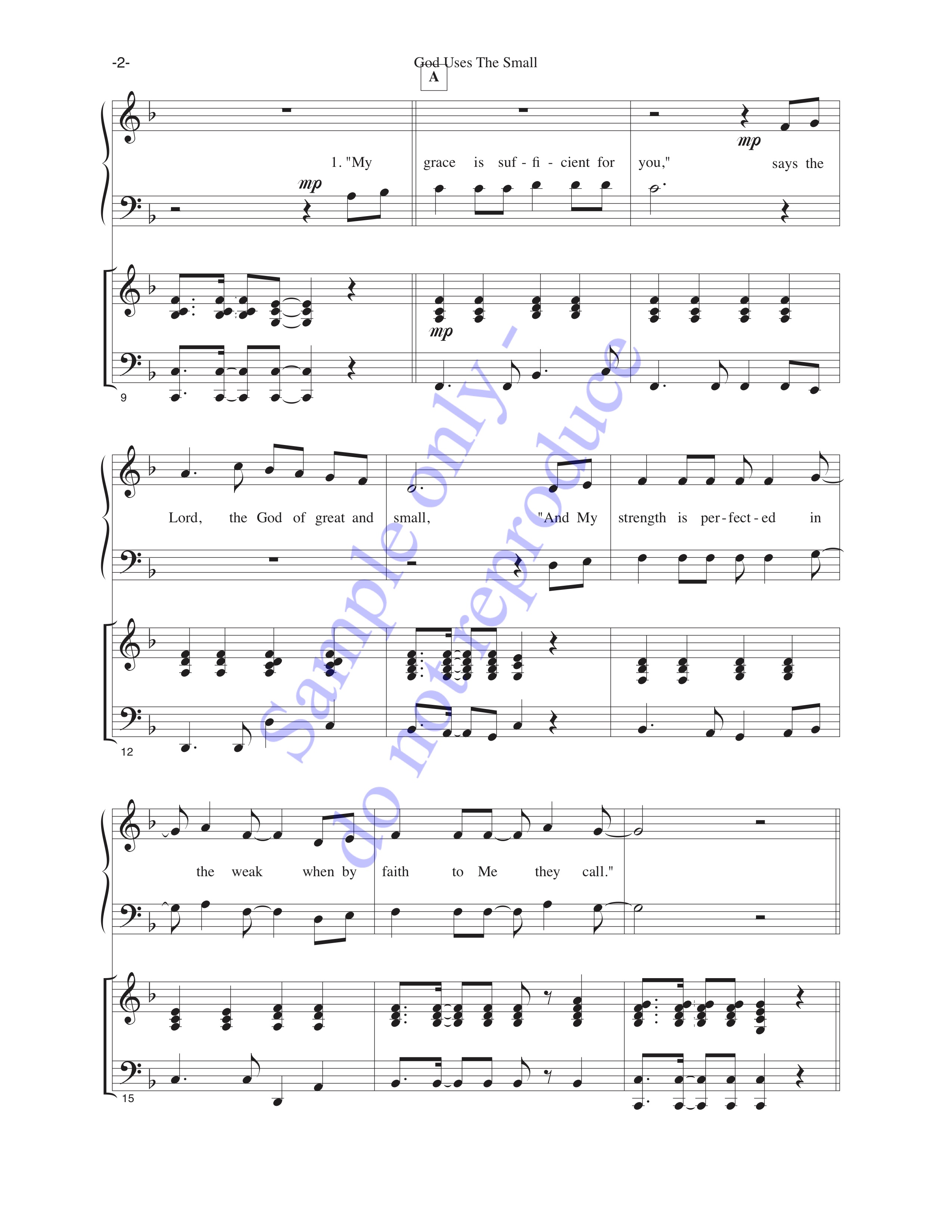Playing handbell duets is both art and science. The art is about making the music happen, and the science is what has to be done to achieve that physically. The combination/interaction of the two is what you see in our videos and live performances.
When we play our really fast music, we each might be zipping along at about eight or more notes per second. When you boil that down to actual music, a rate like that translates to a string of sixteenth notes at a metronome mark of 120 to the quarter note, so that’s not abnormal. Lots of instrumentalists achieve this rate all the time; for instance, it’s a pace you’d expect from lots of music by J.S. Bach. Anyway, the fun bit is that this is equivalent to about 27,000 notes per hour. It’s amazing how much more impressive the bigger number can sound even though it’s really the same amount of playing.
One of the issues that we must conquer when we play eight-bell duets is knowing which bells we have. From there, we also have to know where each one is (which hand, and position in that hand), and when it plays. After that, we also have to know when to damp each bell (that is, turning it off). And that’s just the basic mechanics, because we also have to manage the volume of each note. And after that, we get to interact with each other, such as in fast passages where we play alternating notes.
Anyway, we have a term for when we play two consecutive notes with the same hand, one with each bell, the “flip”. It seems to be an appropriate choice, since it’s playing the two bells not-quite-at-the-same-time (NQATST); that results in a motion that appears to be a bit twisty and, well, “flippy”,
The problem of accuracy is the big deal here. That’s because a motion that makes NQATST has to be done in such a way that the time between the two notes matches the speed of the music. So the part you might not see is that our fingers flex to make one clapper strike, while the hand/arm makes the other strike. Physiologically, it makes a lot of sense, because then different parts of the body are accounting for each action; then they’re independently manageable.
The next trick, of course, is to play multiple flips (for instance, A-C-A-C-A-…) with one hand. These occur fairly frequently in handbell music, so knowing how to use the action for one bell to help the other reset for the next note is essential. But… until you master the single flip, that’s a skill augmentation for another day!
Here’s a video of our eight-bell arrangement of It Is Well with My Soul. Enjoy.


